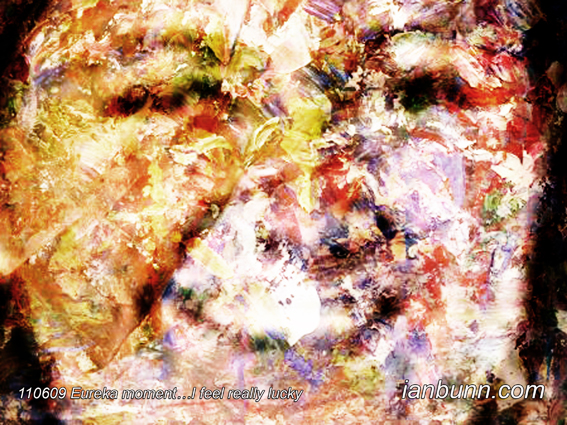![Stefano Ragazzi the Italian Professor undertaking experiments to understand dark particles has been featured by Rebecca Morelle the BBC Science reporter in an article titled ‘Dark Matter: Experiment to shed light on dark particles’ in which she states “In a man-made cavern, deep beneath a mountain, scientists are hoping to shed light on one of the most mysterious substances in our Universe - dark matter. The Gran Sasso National Laboratory seems more like a Bond villain's lair than a hub for world class physics. It's buried under the highest peak of Italy's Gran Sasso mountain range; the entrance concealed behind a colossal steel door found halfway along a tunnel that cuts through the mountain. “The feeling is that dark matter could be just around the corner, so everybody is rushing to be the first to find it” [states] Stefano Ragazzi Director, …But there's a good reason for its subterranean location. The 1,400m of rock above means that it is shielded from the cosmic rays that constantly bombard the surface of our planet. It provides scientists with the "silence" they need to understand some of the strangest phenomena known to physics. Inside three vast halls, a raft of experiments are running - but with their latest addition, DarkSide50, scientists are setting their sights on dark matter. Everything we know and can see in the Universe only makes up about 4% of the stuff that is out there. …They predict that about 73% of the Universe is made up of dark energy - a pervasive energy field that acts as a sort of anti-gravity to stop the Universe from contracting back in on itself. The other 23%, researchers believe, comes in the form of dark matter. The challenge is that until now nobody has seen it. … [Ragazzi] hopes that the first glimpse of dark matter will be in his research facility.” Inspired by Rebecca Morelle, BBC ow.ly/iuL6f Image source infn.it ow.ly/iuL1I](http://www.ianbunn.com/wp-content/uploads/2013/03/130329dcU60.jpg) Dark matter could be just around corner (March 29 2013)
Dark matter could be just around corner (March 29 2013)
Stefano Ragazzi the Italian Professor undertaking experiments to understand dark particles has been featured by Rebecca Morelle the BBC Science reporter in an article titled ‘Dark Matter: Experiment to shed light on dark particles’ in which she states “In a man-made cavern, deep beneath a mountain, scientists are hoping to shed light on one of the most mysterious substances in our Universe – dark matter. The Gran Sasso National Laboratory seems more like a Bond villain’s lair than a hub for world class physics. It’s buried under the highest peak of Italy’s Gran Sasso mountain range; the entrance concealed behind a colossal steel door found halfway along a tunnel that cuts through the mountain. “The feeling is that dark matter could be just around the corner, so everybody is rushing to be the first to find it” [states] Stefano Ragazzi Director, …But there’s a good reason for its subterranean location. The 1,400m of rock above means that it is shielded from the cosmic rays that constantly bombard the surface of our planet. It provides scientists with the “silence” they need to understand some of the strangest phenomena known to physics. Inside three vast halls, a raft of experiments are running – but with their latest addition, DarkSide50, scientists are setting their sights on dark matter. Everything we know and can see in the Universe only makes up about 4% of the stuff that is out there. …They predict that about 73% of the Universe is made up of dark energy – a pervasive energy field that acts as a sort of anti-gravity to stop the Universe from contracting back in on itself. The other 23%, researchers believe, comes in the form of dark matter. The challenge is that until now nobody has seen it. … [Ragazzi] hopes that the first glimpse of dark matter will be in his research facility.”
Inspired by Rebecca Morelle, BBC ow.ly/iuL6f Image source infn.it ow.ly/iuL1I
